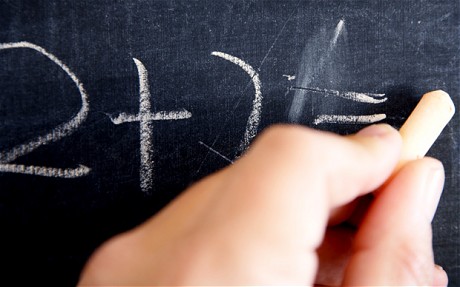A new study has found that first grade teachers with struggling students may be using less effective methods of teaching. The study examined classrooms across America containing students with and without mathematical difficulties, and found that many of the classrooms with a high percentage of mathematically struggling students were led by teachers deviating from traditional practices.

1st grade students struggling with maths benefit more from traditional methods of teaching. Image via the Telegraph.uk
Teachers in these classrooms were more likely to use student-centrered instructional methods, such as movement, music and calculators. One of the authors from the study, Paul Morgen, suggests this is due to good intentions on behalf of the teacher, who is often attempting to engage the student in more innovative ways. “[Teachers think] if the student doesn’t seem engaged in math, maybe doing something that seems more engaging to a first grader, like coupling the math instruction with music or movement around the classroom,” he says.
However, such practices have shown to be ineffective, providing little to no benefit for struggling students. The study concluded that the best way to help struggling students is with traditional teacher-directed practices, which includes textbooks, worksheets, chalkboards, and routine practice. These methods are far more likely to help students become comfortable using mathematical facts, skills and abilities.
Instilling mathematical capability at a young age is also vitally important to students’ future – with the study also finding that students who struggled with maths at an early age also more likely to struggle with mathematics throughout high school and are also more likely to experience unemployment and reduced wages.
To read more about the study, you can visit the Science Codex. A copy of the original study has also been made available online.



